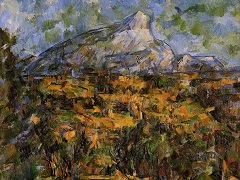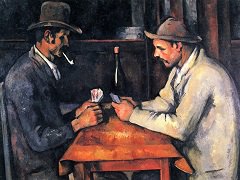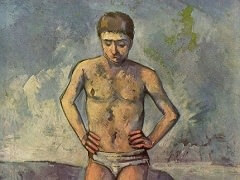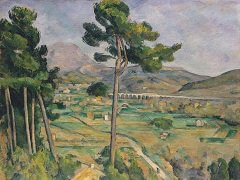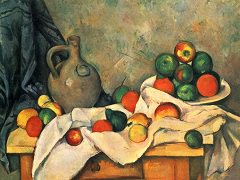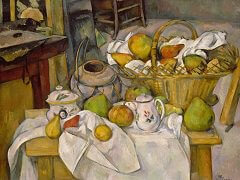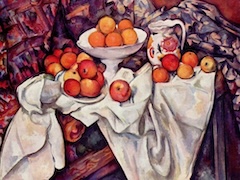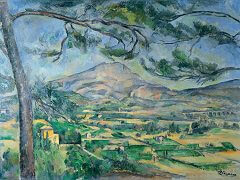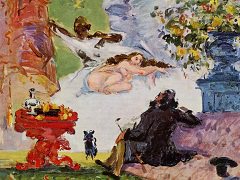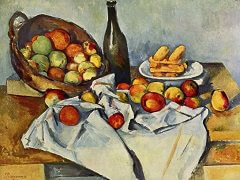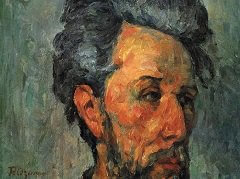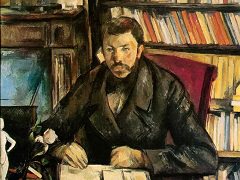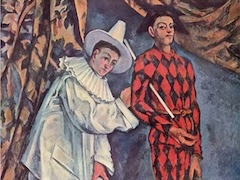Tulips and Apples, 1894 by Paul Cezanne
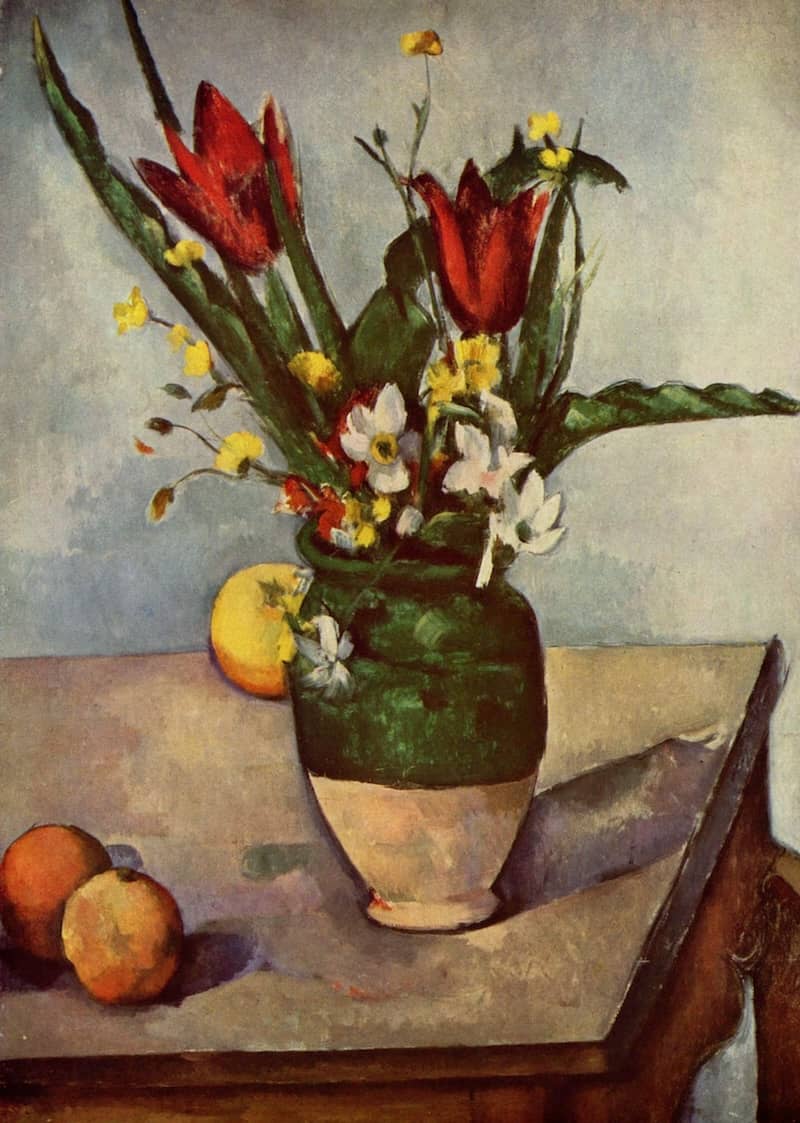
In this beautiful still life the contrasts of forms and colors, their adjustment to each other, are astonishingly subtle. We see the two red tulips together with the two apples below; the dispersed little flowers repeat in a different way the concentrated yellow of the apple behind the vase; and the spread of the outermost green leaves resembles in reverse the wide angle of the warm dark edges of the table. But the elements of the bouquet are active f orms, lively and even charming, a cluster of growing, expanding things painted with great freedom; the apples and the table are closed forms, detached, inert, silent - a sparse world. It is a harmony of opposed elements, a strange balance of contrary qualities, united through hidden analogies and a most sensitive play of color. We feel a vague human drama in this still life, especially in the separateness of the apples, as if the relations of people, their desires and constraints, have been translated into the contrasts and groupings. The severer fields of the table and wall are painted in subdued light tones - contrasted warms and cools of an extraordinary delicacy; t he living plants have angular thrusting forms, large and small, with strong zigzags sharper than the edges of the table and repeated in the great silhouette of dark green in the extended right leaf and the vase. The lower part of the vase is colored like the table, its rounded outline is like the fruit, and the slight curvature of the horizontal boundary of its two colors responds to the faint convexity of the back of the table. Between the apples and the tulips is an undrawn diagonal - an implicit and unescapable line of attraction - which parallels the side of the table and unites tulips and apples with the former. These and many other nice unstressed relationships compel our admiration. Fascinating is the curved shape, like the end of a leaf or petal, observed on the wall between the legs of the table.


